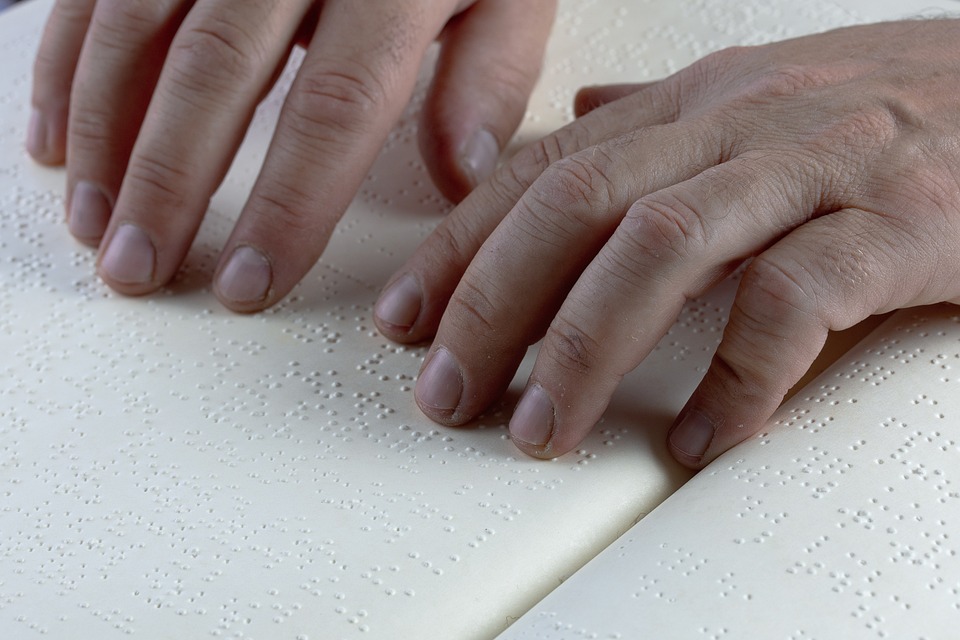Blindness inhibits a person’s ability to move as swiftly as he would if he could see, and a blind person may need to seek help. However, it is equally critical to provide him every opportunity to be as self-sufficient as he desires.
Braille And “Talking Books”

The Braille alphabet was developed by Louis Braille (1809-52). He was a blind student in Hauy’s school who later became a teacher. The letters of the Braille alphabet are based on a system of six raised dots that the blind can read with their fingertips. Braille codes have also been developed for music and mathematics.
Braille is produced by punching dots into heavy paper with a pencil-like stylus. Since the dots are pushed down into the heavy paper, the paper must be turned over to be read. One dot is A; another added below it forms B. To save space, combinations of dots may mean common words or parts of words such as “for” or “-tion.” The first 10 letters of the alphabet also stand for the numbers 1 through 10. Using a Braille writer, it is possible to write as many as six dots at once by pressing six keys.
What Is A Talking Book?
The world of books is open to the blind today through books prepared in Braille and through long-playing recordings of books, called talking books. The largest producer of Braille textbooks is the American Printing House for the Blind in Louisville, Kentucky.
The Library of Congress of the United States, Division for the Blind and Physically Handicapped, in Washington, D.C, has hundreds of thousands of Braille volumes and talking books. Hundreds of new library titles are recorded and brailled each year. Throughout the country, there are libraries that act as distributing centers for these books and records. They are mailed postage-free.
Dog Guides And The Use Of The Cane

Being able to travel safely and independently is one of the major goals of the blind. At one time, blind persons had to depend only on human guides. Large numbers of the blind still do. But when dog guides were introduced into the United States, many blind persons were able to have new independence.
The first training school for do guides, established in 1929, is now known as the Seeing Eye, Inc. and is located in Morristown, New Jersey. There are several other training schools throughout the United States today.
To secure a dog guide, the blind person applies to one of these centers. He is given a dog that has already been trained in guiding the blind. Most dog guides are German shepherds. For a month, the dog and his new master are trained to work together as a team. The dog learns to obey his master and the blind person learns to care properly for his dog. The two will spend all of their time together. Dog guides are usually permitted to accompany their masters wherever they go – in college classrooms, on trains, in hotels and restaurants.
The blind person grasps a long handle rising from a harness on the dog’s back as he and his dog move through the streets. Together they travel more swiftly than the average person. They walk at a rate of 3 to 3 ½ miles an hour. The dog does not actually lead his master. He obeys commands to go left, right and forward. The blind person must always remember where he is or knows how many blocks he must walk in a certain direction, because a dog cannot read addresses and street signs. The command to cross at street light also comes from the master. The blind are trained to listen for certain signals or cues such as the click of the traffic light as it changes and the sounds of the movement of traffic.







